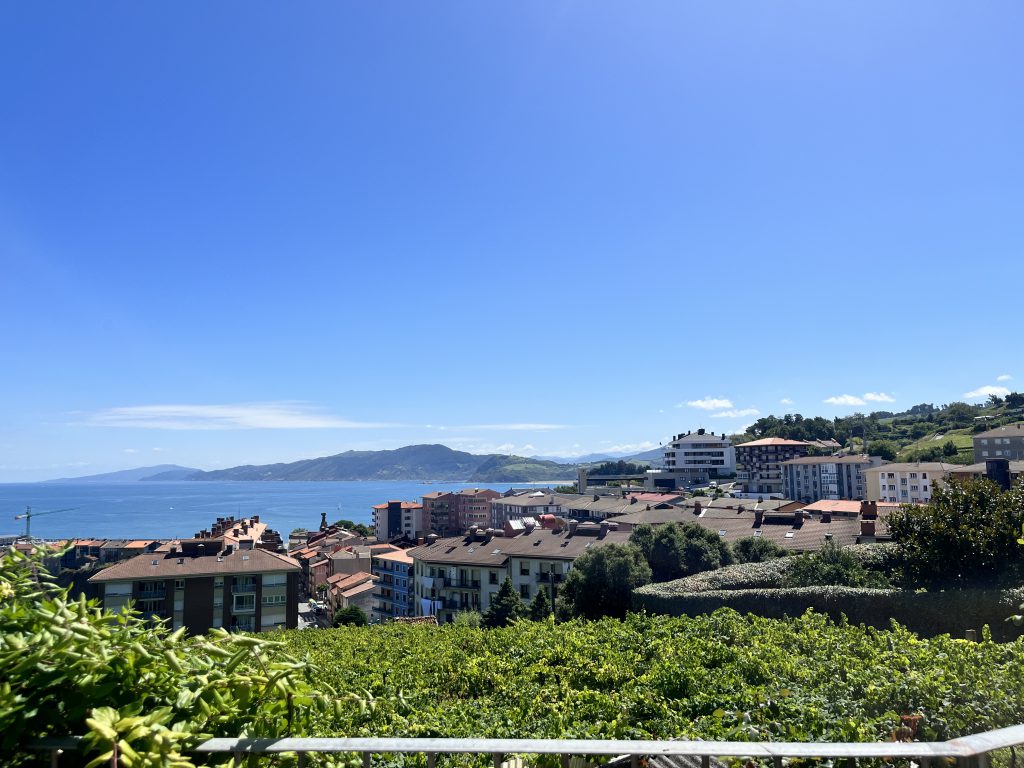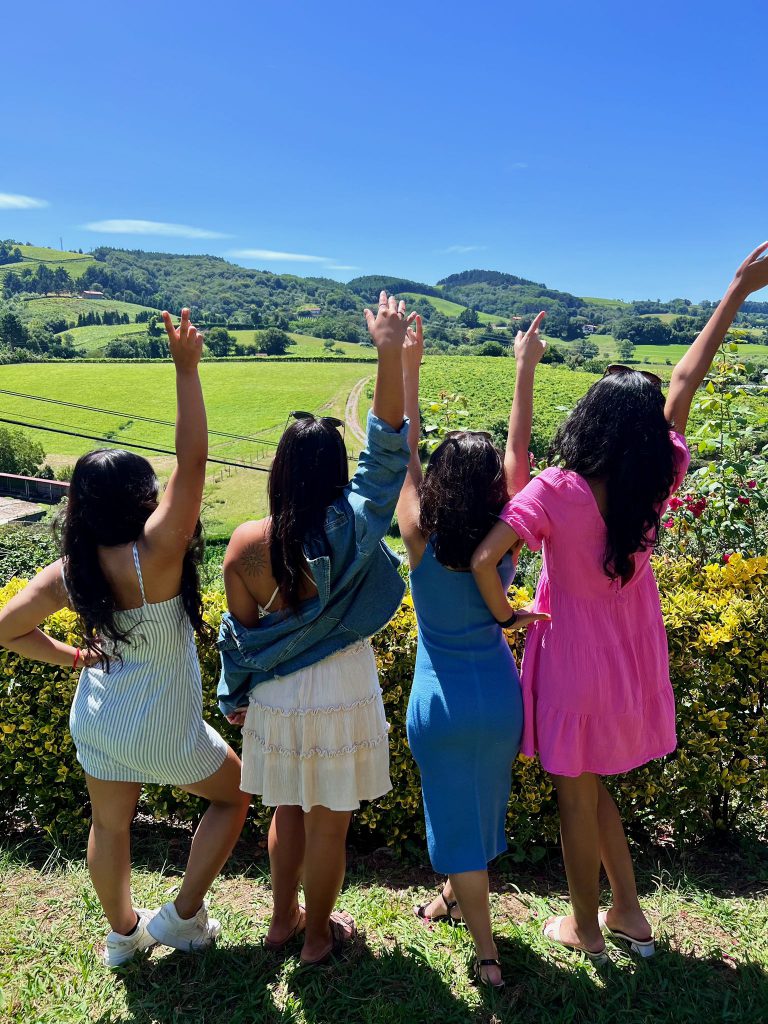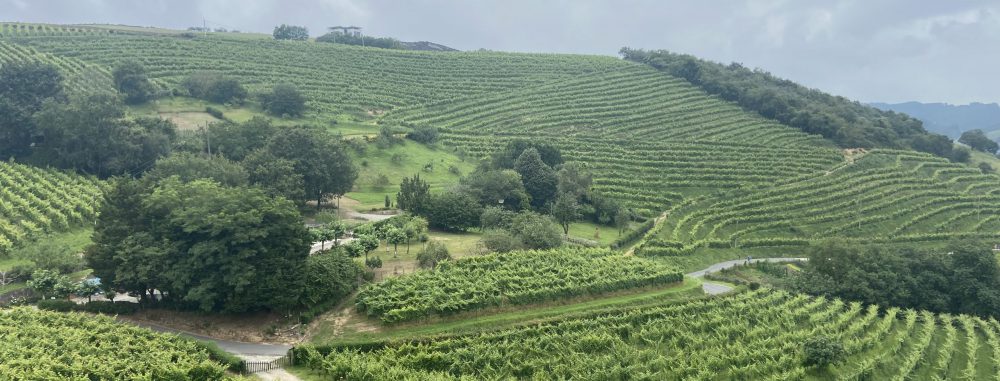Txakoli, pronounced “Cha-Kuh-Lee” is an acidic white wine produced in the Basque Country. In traditional basque culture, people eat by the season, for example txakoli is a summer wine and red wine is for winter. This is done to get the most out of its flavor.
On Saturday morning, the session three students gathered together in our best outfits to visit The Giantza Winery in the Gipuzkoa province of Spain. The ride was approximately 25 minutes and the weather was beautiful compared to the day prior. Upon our arrival I was immediately in awe of the sights before me, vibrant green hills planted with grapes and The Atlantic Ocean in our midst.

We were greeted by the great-grandson of José Antonio and learned that the vineyard has been family owned for four generations. Each family member holds a different job at the vineyard, for example his brother is the engineer and his mother is in charge of shipping the wine globally. The grapes are manually picked during harvest by the family and five other workers, and to determine the best grapes for the txakoli they observe the size of the grapes or sometimes the color of the branches.
The vineyard being by the ocean is an integral part of txakoli, it allows for the wine to be slightly salty. However, it can also produce too much humidity, especially with global warming on the rise. Humidity may cause the grapes to be infected with diseases such as mildew, preventing the family from turning it into wine.
We were then taken to a bodega where the grapes are pressed and separated from its skin and seeds. Following that, we were led into a temperature regulated room (14 degrees celsius) where all the tanks are held and where the grape juice ferments into alcohol. The fermentation process takes around 25 days, each tank having its own world of microorganisms. At the end of the fermentation process, the family samples each of the tanks’ wine to ensure the taste is uniform amongst each other. We then were led to the bottling room, where we learned that all of their packaging is environmentally sustainable and observed the evolution of their wine bottles. At first they started out with no labels on their bottles which made it hard to distinguish among other wineries.

Now comes my favorite part of our day trip, the wine tasting! We first tried the original txakoli, a young wine produced in 2022. It was yellow in color and held an apple aroma. Grapes and apples have the same acidity, so they’re often paired together. When pouring the txakoli you have to do it from up high, this allows the wine to aerate and give a semi-sparkling taste. With my first sip of this wine I could taste the salt from the ocean, as we drank this wine we had anchovies and bread to eat it with.
The second wine we had was Cepas Centenarias produced in 2020, the color was a dark yellow due to its older age and held a pear aroma. One thing I noticed about this wine was the taste lasted longer and I preferred it over the first. We paired it with the white tuna and it was muy bien (very good).
The last wine was my all time favorite, the rosé. It held a sweet and cherry aroma, we paired it with an amazing christmas chocolate called Turrón. The chocolate was sweet, salty and crunchy and went perfectly with the rosé. For this one we were allowed to pour the wine into our glasses ourselves and I can definitely say it’s harder than it looks. Many of us missed the glass and got it all over the table. One fun fact about this winery is that 80% of the rosé produced here is shipped to the states and I can see why.
We ended our short day trip with lots of photos and many of us bought wine to bring home to our families. I’m so grateful that my first winery experience was in the great Basque Country, going to the winery perfectly tied off our first week in San Sebastián. I’ve already learned and grown so much from my short time here and I can’t wait to see what the next two weeks have to offer.

